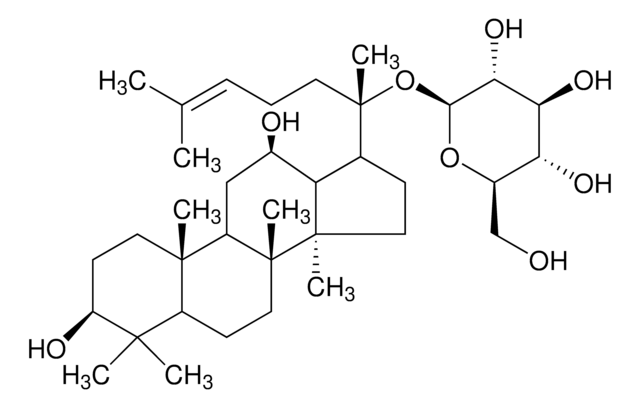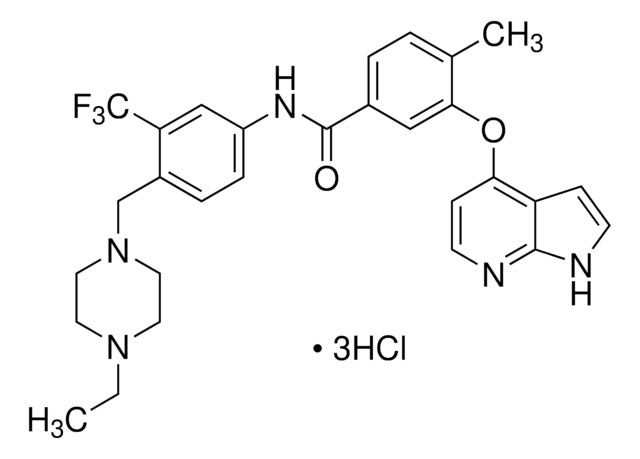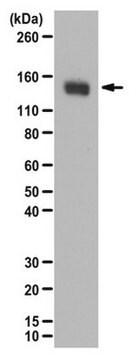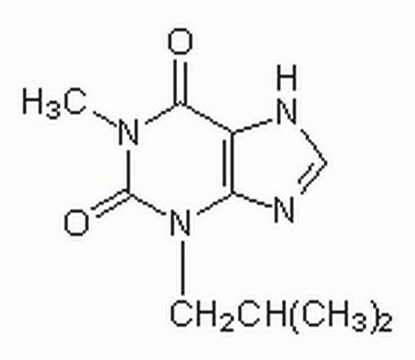ABS45
Anticorps anti-phospho-MYPT1 (Thr696)
from rabbit, purified by affinity chromatography
Synonyme(s) :
Myosin phosphatase target subunit 1, Myosin phosphatase-targeting subunit 1, Protein phosphatase myosin-binding subunit, myosin phosphatase, target subunit 1, protein phosphatase 1, regulatory (inhibitor) subunit 12
About This Item
Produits recommandés
Source biologique
rabbit
Niveau de qualité
Forme d'anticorps
affinity isolated antibody
Type de produit anticorps
primary antibodies
Clone
polyclonal
Poids mol.
(~130 kDa observed; 115.28 kDa calculated. Uncharacterized bands may be observed in some lysate(s).)
Produit purifié par
affinity chromatography
Espèces réactives
human
Réactivité de l'espèce (prédite par homologie)
canine (based on 100% sequence homology), rat (based on 100% sequence homology), primate (based on 100% sequence homology), mouse (based on 100% sequence homology), chicken (based on 100% sequence homology), horse (based on 100% sequence homology), Xenopus (based on 100% sequence homology)
Technique(s)
inhibition assay: suitable (Peptide Inhibition Assay)
western blot: suitable
Numéro d'accès NCBI
Numéro d'accès UniProt
Conditions d'expédition
wet ice
Modification post-traductionnelle de la cible
phosphorylation (pThr696)
Informations sur le gène
human ... PPP1R12A(4659)
Description générale
Spécificité
Immunogène
Application
Signalisation
Kinases et phosphatases
Qualité
Analyse par western blotting : Une concentration de 0,1 µg/ml de cet anticorps a permis de détecter la protéine MYPT1 phosphorylée au niveau du résidu Thr696 dans 10 µg de lysat de cellules HEK293 traitées par calyculine/acide okadaïque et non traitées.
Description de la cible
Liaison
Forme physique
Stockage et stabilité
Remarque sur l'analyse
Lysats de cellules HEK293 traitées par calyculine/acide okadaïque et non traitées.
Autres remarques
Clause de non-responsabilité
Vous ne trouvez pas le bon produit ?
Essayez notre Outil de sélection de produits.
Code de la classe de stockage
12 - Non Combustible Liquids
Classe de danger pour l'eau (WGK)
WGK 1
Point d'éclair (°F)
Not applicable
Point d'éclair (°C)
Not applicable
Certificats d'analyse (COA)
Recherchez un Certificats d'analyse (COA) en saisissant le numéro de lot du produit. Les numéros de lot figurent sur l'étiquette du produit après les mots "Lot" ou "Batch".
Déjà en possession de ce produit ?
Retrouvez la documentation relative aux produits que vous avez récemment achetés dans la Bibliothèque de documents.
Notre équipe de scientifiques dispose d'une expérience dans tous les secteurs de la recherche, notamment en sciences de la vie, science des matériaux, synthèse chimique, chromatographie, analyse et dans de nombreux autres domaines..
Contacter notre Service technique







